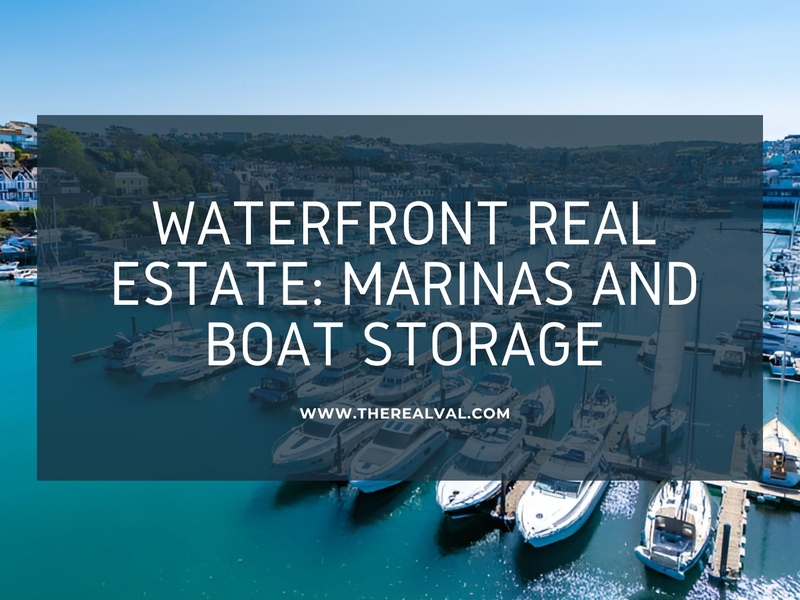Waterfront real estate has always been synonymous with luxury and exclusivity. But beyond the commonly known beachfront condos and lakeside homes lies a smaller, lesser-known segment that’s catching investors’ attention: marinas and boat storage facilities. With more people taking up boating, and waterfront land becoming harder to find, these niche assets are turning into strong, long-term investment opportunities across the globe.
Let’s Discuss the Rise of Boating Lifestyle
The pandemic sparked a huge rise in recreational boating. According to the National Marine Manufacturers Association (NMMA), U.S. new boat sales crossed 300,000 units for two straight years after 2020; after which it normalized to pre-pandemic levels. However, the global marinas market is seeing strong growth, projected to expand from $18.89 billion in 2023 to about $24.22 billion by 2028, according to a recent market research report published on Yahoo Finance. This represents a CAGR of 5.1%, highlighting the sector’s steady and promising momentum worldwide.
Boating remains popular among high-net-worth individuals and retirees who value leisure and community life. As a result, marinas today are evolving into lifestyle destinations too: complete with restaurants, retail outlets, and boutique stays, not just parking spaces for boats. This creates a strong demand for dock slips, boat lifts, and storage facilities, especially in states like Florida, California, and the Carolinas.
What Makes Marinas Smart Investment?
Marinas are unique because they combine real estate ownership with an operating business model, giving investors multiple revenue streams and some protection from market ups and downs:
- Steady Income: Marinas earn consistent income through slip rentals, fuel sales, boat repairs, and storage fees. Many locations even have waiting lists, especially where zoning laws make new developments difficult.
- Limited Supply: Building a new marina is expensive and complicated, requiring multiple environmental and coastal permits. This makes existing marinas highly valuable and less vulnerable to market changes.
- Inflation Protection: Marina fees (like slip rents and service charges) can be adjusted annually, helping them keep pace with inflation. Plus, their customers tend to be less affected by short-term economic shifts, offering stable returns.
- Redevelopment Opportunities: Older marinas in premium locations often offer chances for redevelopment or repositioning by adding new amenities, upgrading storage systems, or incorporating hospitality features like yacht clubs and restaurants.
The Boat Storage Business
Boat storage plays a major role in a marina’s profitability. As boats get larger and more advanced, demand for dry stack storage (which are multi-level racks that keep boats safely indoors) has been growing quickly. This system uses land more efficiently, reduces damage from weather and saltwater, and offers owners greater protection and convenience.
With climate-related storms becoming more frequent, boat owners, especially in coastal states like Florida and Texas, are readily looking for secure, hurricane-resistant storage options.
Many marinas are also stepping up their service offerings. Some provide concierge-style amenities such as cleaning, fuelling, and launching boats on demand. These premium services not only boost customer satisfaction, but also open doors to higher pricing and stronger customer loyalty.
Where Do Opportunities Lie? - Examples
- Florida: Florida leads the U.S. in marina density. Investors are actively buying and upgrading older marinas into luxury, mixed-use waterfront hubs that combine dining, retail, and residential spaces. Example: The Loggerhead Marina network across Florida was acquired and consolidated under Suntex Marinas, a large institutional operator. This move has helped create brand consistency, operational efficiency, and economies of scale across the portfolio.
- Great Lakes Region: Inland states like Michigan and Wisconsin are gaining investor attention as freshwater boating grows in popularity. Redeveloping older marinas along Lake Michigan has emerged as a profitable niche.
- Pacific Northwest: States like Washington and Oregon are witnessing a wave of eco-friendly marina projects. These developments use sustainable materials and include electric charging stations for hybrid and electric boats. The trend aligns well with the ESG (Environmental, Social, and Governance) priorities of modern investors looking for green infrastructure opportunities.
Rising Institutional Interest
- The marina industry, which was once made up mostly of small, family-owned businesses, is now experiencing a wave of institutional consolidation. Private equity firms and REITs are purchasing marinas across the U.S. to tap into their steady cash flows and operational efficiencies.
- Major players like Safe Harbor Marinas (backed by Blackstone Infrastructure) and Suntex Marinas have been expanding rapidly. Their involvement has not only increased investment activity but also raised industry standards by introducing digital booking systems, membership-based models, and hospitality-style experiences that make marina ownership and usage more seamless.
- This growing institutional interest shows strong confidence in marinas as dependable, lucrative income-generating assets. With both real estate value and business revenue potential, marinas stand out as a unique and resilient niche in the broader real estate landscape.
Challenges to Consider
While marinas present strong investment potential, they also come with their own set of challenges:
- Environmental Regulations: Obtaining permits for dredging, expansion, or coastal development can be slow and complex, often delaying projects or limiting growth.
- Weather Risk: Hurricanes, floods, and rising sea levels can cause major operational disruptions and drive up insurance costs.
- High Capital Costs: Maintaining docks, seawalls, and storage facilities requires regular investment and upgrades to stay compliant and safe.
- Operational Demands: Marinas aren’t passive assets, instead they require hands-on management, industry knowledge, and strong customer service to operate efficiently.
Despite these risks, seasoned investors often view marinas as long-term, yield-generating assets that blend lifestyle appeal with the stability of tangible real estate.
As waterfront land becomes scarcer and recreational boating remains a key part of American leisure, marinas and boat storage facilities are emerging as resilient, high-value investments.
Their unique ability to combine steady operational income with underlying property value makes them a hybrid asset class which is part business, part real estate.
For investors seeking diversification, inflation protection, and a connection to the luxury leisure economy, marinas could represent the next wave of opportunity in waterfront real estate.
How to Get Started with Investing in Marinas?
Are you interested in tapping into the unique niche of Marinas? These steps might help:
- Research target markets (coastal vs. inland).
- Understand licensing and environmental compliance requirements.
- Evaluate storage capacity, occupancy, and seasonality.
- Start small with dry-stack or indoor storage.
- Consider partnerships or fractional ownership platforms.
OR
You can write to us at info@therealval.com to discuss customized investment strategies for your waterfront project.
Trending





